Advertisements
Can Pets Get Lice? Types, Symptoms, Treatments & Prevention for Lice in Pets
Can pets get lice?Yes! Discover which lice types affect pets, recognize key symptoms, learn effective treatment methods, and crucial prevention strategies. Protect your furry friend now.
Table of contents
- Can Pets Get Lice? The Surprising Truth About Species-Specific Parasites
- Which Types of Lice Affect Pets? The Bugs You Need to Know
- Symptoms of Lice in Pets: How to Spot an Infestation Early
- How to Treat Lice: A Step-by-Step Guide for Desperate Pet Parents
- How to Prevent Lice in Pets: Your Ultimate Shield Against Parasites
- Q&A: Burning Questions About Lice and Pets
- Final Thoughts: You’ve Got This!
Hey there, fellow pet parents! If you’re reading this, chances are you’ve either spotted your furry friend scratching like crazy or heard a horror story about lice infestations in pets. Let’s cut through the noise and answer the question that’s been keeping you up at night: Can pets get lice? Spoiler alert: The answer is a resounding yes—but not in the way you might think. Buckle up, grab your pet’s favorite toy, and let’s dig into the nitty-gritty (pun intended) of lice, symptoms, treatments, and prevention strategies.
Can Pets Get Lice? The Surprising Truth About Species-Specific Parasites
First things first: Can pets get lice? Absolutely, but here’s the kicker—they don’t get human lice. Human lice (like head lice or body lice) are species-specific, meaning they’re evolved to feast on Homo sapiens blood and hang out exclusively on our scalps or clothing. Pets, on the other hand, have their own exclusive lice clubs.
The Science Behind Species-Specific Lice
Lice are like picky eaters at a buffet—they’ll only dine on one type of host. Human lice (e.g., Pediculus humanus capitis) have claws shaped to grip human hair strands. Pet lice, like the canine louse Trichodectes canis or the feline louse Felicola subrostratus, have evolved claws that fit their hosts’ fur. This means:
- Your dog can’t catch head lice from your kid’s pillow.
- Your cat won’t borrow your body lice during cuddle time.
- But pets can get their own species-specific lice from other animals.
Common Misconceptions About Cross-Species Transmission
I’ve heard folks panic, “My kid brought home lice—now my dog’s doomed!” Relax. Here’s why it’s unlikely:
- Host Adaptation: Human lice can’t survive on pets’ fur or skin pH.
- Life Cycle Mismatch: Pet lice lay eggs (nits) on hair shafts, but human lice nits are glued to human hair—and won’t hatch on pet fur.
- Behavioral Differences: Pets groom obsessively, often dislodging lice before they multiply.
Still, it’s wise to keep pets away from infested humans (or other pets) until the issue’s resolved. Better safe than sorry, right?
When to Worry About Cross-Species Risks
Okay, so pets don’t get human lice—but can they share lice with other pets? Yep. Here’s the deal:
- Dogs and Cats: Different species, different lice. A dog louse won’t thrive on a cat, and vice versa.
- Multi-Pet Households: If one pet has lice, isolate them until treated. But remember: Lice are host-specific, so your cat isn’t at risk from your dog’s lice (though fleas or mites are another story).
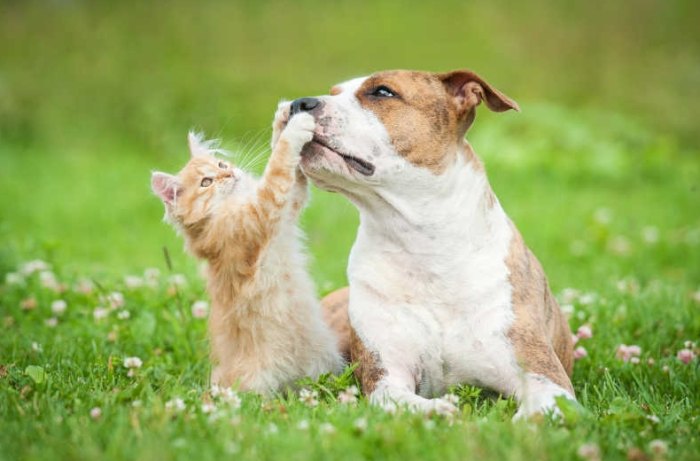
Which Types of Lice Affect Pets? The Bugs You Need to Know
Now that we’ve established can pets get lice, let’s meet the creepy crawlies themselves. There are three main types of lice that target pets: biting lice, sucking lice, and (spoiler alert) some imposters that aren’t actually lice.
Biting Lice: The Chewing Menace
Biting lice (e.g., Trichodectes spp.) don’t suck blood—they munch on skin debris, scales, and secretions. Gross, right? Here’s what to know:
- Hosts: Dogs (Trichodectes canis), cats (Felicola subrostratus), and livestock (like horses with Damalinia equi).
- Appearance: Flattened, wingless bugs with broad heads and chewing mouthparts.
- Risks: Irritation, hair loss, and secondary infections from scratching.
Sucking Lice: The Bloodsuckers
Sucking lice (e.g., Linognathus spp.) pierce the skin to feast on blood. These are the vampires of the lice world:
- Hosts: Primarily dogs (Linognathus setosus) and livestock (like sheep with Linognathus ovillus).
- Appearance: Slimmer bodies with piercing-sucking mouthparts.
- Risks: Anemia (especially in puppies), itching, and allergic reactions.
The Imposters: Mites, Fleas, and Other Lookalikes
Before you panic about lice in pets, rule out these copycats:
- Cheyletiella Mites: “Walking dandruff” mites that cause flaky skin.
- Fleas: Jumping pests that leave bites and cause tapeworm risks.
- Demodex Mites: Microscopic bugs that cause mange.
Pro tip: Use a fine-toothed comb under bright light to spot lice. They’ll look like slow-moving specs (unlike zippy fleas).
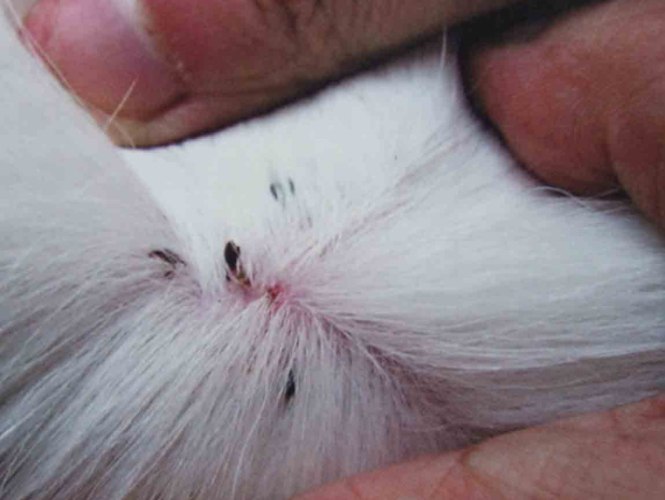
Symptoms of Lice in Pets: How to Spot an Infestation Early
Alright, so can pets get lice? Yes. But how do you know if your furball’s dealing with them? Here’s the lowdown on symptoms of lice in pets, from subtle signs to full-blown crises.
The Classic Signs: Itching, Scratching, and Hair Loss
If your pet’s suddenly a scratching machine, lice might be to blame. Look for:
- Intense Itching: Especially around the ears, neck, back, and tail base.
- Hair Loss: Bald patches from over-grooming or biting.
- Red, Irritated Skin: Scratches can lead to sores or infections.
Pro tip: Lice prefer warm, hairy spots, so check your pet’s “armpits,” groin, and belly too.
The Gross-But-True Sign: Nits (Lice Eggs)
Nits are the telltale sign of lice in pets. Here’s what to look for:
- Appearance: Tiny, oval, yellow-white eggs glued to hair shafts (unlike dandruff, which brushes off easily).
- Location: Close to the skin, especially near the ears, neck, and rump.
- Clustering: Nits often appear in rows along the hair shaft.
Pro tip: Use a magnifying glass or your phone’s zoom to spot nits. They’re smaller than a grain of salt!
When to Freak Out (and When to Chill)
Not all itching means lice. Here’s how to tell the difference:
- Lice: Constant scratching, visible nits, and hair loss in patches.
- Allergies: Seasonal itching, red bumps, and face/paw chewing.
- Fleas: Flea dirt (black specks that turn red when wet), jumping bugs, and hot spots.
If in doubt, swipe a lint roller over your pet’s fur and stick it to tape. Lice or nits will stick like glue!
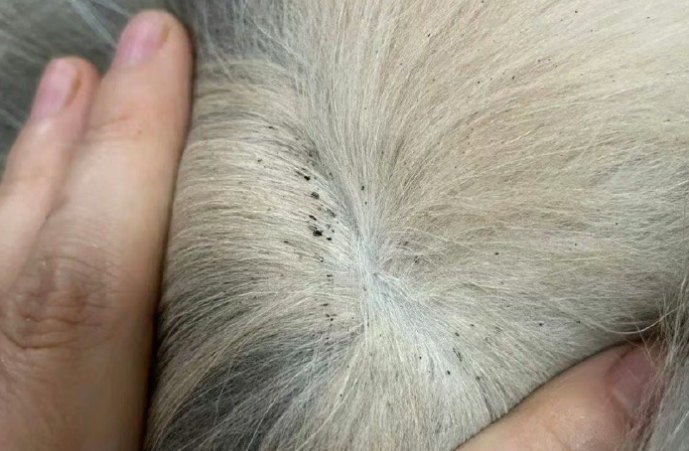
How to Treat Lice: A Step-by-Step Guide for Desperate Pet Parents
Okay, you’ve confirmed lice in pets. Now what? Don’t panic—how to treat lice is totally doable at home or with vet help. Here’s your battle plan.
Step 1: Isolate the Infected Pet
Lice spread via contact, so:
- Quarantine: Keep the infected pet away from others until treated.
- Wash Bedding: Hot water (130°F+) and a high-heat dryer cycle kill lice and nits.
- Vacuum Like Crazy: Suck up stray lice or nits from carpets, furniture, and car seats.
Pro tip: Freeze plush toys or blankets for 24 hours to kill lice (they can’t survive cold temps).
Step 2: Choose the Right Treatment
How to treat lice depends on the type and severity. Here’s what works:
- Topical Insecticides: Products with fipronil (like Frontline) or imidacloprid (Advantage) kill lice on contact.
- Pros: Fast-acting, easy to apply.
- Cons: Some pets react to chemicals.
- Shampoos: Pyrethrin-based shampoos (like Adams Plus) suffocate lice.
- Pros: Natural option, good for mild cases.
- Cons: Must lather for 10+ minutes—good luck with cats!
- Oral Medications: For severe cases, vets may prescribe ivermectin or selamectin (Revolution).
- Pros: Systemic protection.
- Cons: Costly and requires a prescription.
Step 3: Comb, Comb, Comb!
No treatment works without mechanical removal. Here’s how:
- Use a Lice Comb: Fine-toothed combs (like the Safari Lice Comb) trap lice and nits.
- Technique: Part the fur, comb slowly from root to tip, and wipe the comb on a damp paper towel.
- Frequency: Daily for 2 weeks, then weekly for a month.
Pro tip: Dunk the comb in soapy water between strokes to drown lice.
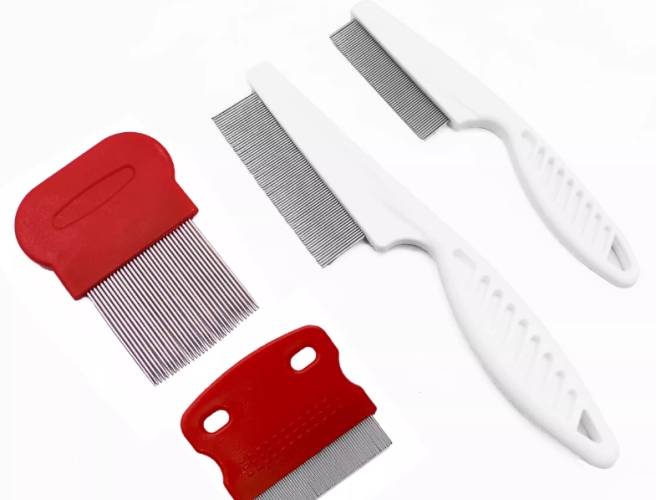
How to Prevent Lice in Pets: Your Ultimate Shield Against Parasites
Prevention is better than cure, right? Here’s how to keep lice in pets at bay—no itching, no stress, just happy tails.
Strategy 1: Regular Grooming and Inspections
Make grooming a bonding ritual:
- Weekly Checks: Run a lice comb through your pet’s fur, especially after outdoor adventures.
- Bath Time: Use a mild shampoo to keep skin healthy (dry skin attracts pests).
- Trim Long Fur: Shorter hair makes lice harder to hide.
Strategy 2: Keep ’Em Clean (But Not Too Clean)
Hygiene matters, but don’t overdo it:
- Bathing: Once a month (unless your vet says otherwise). Over-bathing strips natural oils.
- Clean Bedding: Wash weekly in hot water.
- Avoid Strays: Unvaccinated or stray animals may carry lice.
Strategy 3: Flea and Tick Prevention (Yes, It Helps!)
Many flea/tick treatments also repel lice:
- Spot-Ons: Products like Bravecto or NexGard cover multiple parasites.
- Collars: Seresto collars repel lice for 8 months.
- Sprays: Natural options like cedar oil or neem oil deter lice.
Pro tip: Ask your vet for a parasite-prevention plan tailored to your pet’s lifestyle.
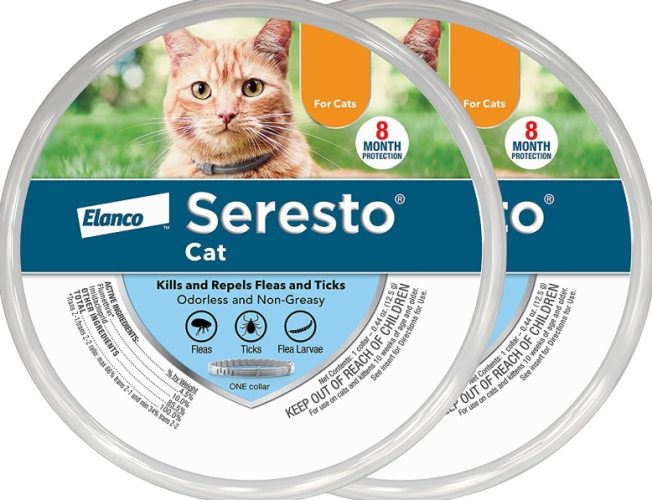
Q&A: Burning Questions About Lice and Pets
Still got questions? I’ve got answers. Here’s the lowdown on lice in pets, answered like we’re chatting over coffee.
Can Pets Get Body Lice From Humans?
Nope. Human body lice (Pediculus humanus humanus) are species-specific. Your pet’s safe from your lice—but keep them away from infested humans to avoid flea/mite cross-contamination.
Can My Cat Get Lice If I Have It?
Zero chance. Human head/body lice can’t survive on cats. But if you have lice, wash your bedding, hats, and brushes in hot water to avoid reinfesting yourself.
Can My Dog Get Lice From My Kid?
Again, no. Human lice won’t latch onto your pup. But if your kid has lice, treat them ASAP and wash shared items (like car seats or couches) to prevent spread.
Can Dogs Get Lice From Cats?
Rarely. Dog lice (Trichodectes canis) and cat lice (Felicola subrostratus) are host-specific. But if your dog and cat share a bed, wash it in hot water to kill any stray lice (just in case).
How to Get Rid of Dog Lice at Home Fast
Here’s your emergency plan:
- Bath: Use a pyrethrin shampoo (lather for 10 minutes).
- Comb: Daily with a lice comb.
- Treat Environment: Wash bedding, vacuum, and freeze plush toys.
- Repeat: Treat again in 7–10 days to catch newly hatched lice.
Can I Give My Pet Lice?
Technically, no—you can’t give them lice, but you can accidentally introduce lice via contaminated items (like sharing a brush with an infested pet). Always sanitize grooming tools between pets!
How to Treat Dog Lice
For a mild case:
- Shampoo: Pyrethrin-based, left on for 10 minutes.
- Comb: Daily for 2 weeks.
- Prevent: Use a flea/tick collar with lice repellent. For severe cases:
- Vet Visit: Prescription oral meds or topical treatments.
Final Thoughts: You’ve Got This!
Phew! We’ve covered a lot of ground on lice in pets, from “Can pets get lice?” to “How to treat lice” and “How to prevent lice in pets”. Remember: Lice are a pain, but they’re manageable with vigilance, treatment, and a little patience. Your pet’s health is worth the effort—and hey, you’ve got a new party trick: “Did you know cats can’t get human lice?”
Stay calm, comb often, and never underestimate the power of a good bath. Your fur baby (and your sanity) will thank you!
Leave a Message